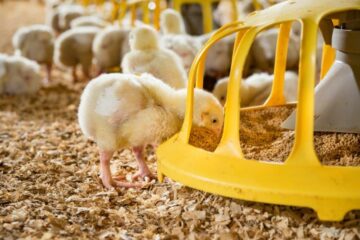A Critical Step: Engaging Students about Animal Ag & Antibiotics
If those of us involved in animal agriculture would like to maintain the broad public support historically awarded to farmers and ranchers, it is critical to engage young people. Recognizing that we’ve flipped from 98 percent of the population having a direct connection to agriculture to only 2 percent, failure to engage the next generation would be equivalent to saying our social license to operate doesn’t matter.
That’s why I was so pleased to hear from middle school students in Yuma, Arizona. They contacted me with questions about how antibiotics are used in farm animals. As a veterinarian and mother of three, including a middle school-age daughter, I welcomed the opportunity to engage and provide some information.
I’d like to share the conversation with you in hopes it sparks ideas and interest among producers, veterinarians, and others in agriculture to engage, particularly with young people. Here’s how it went:
What impact do antibiotics have on society, humans, animals and the environment?
Maintaining healthy farm animals is an important part of providing healthy food for our families. Healthy animals make healthy food. Vaccines, proper nutrition, good ventilation and proper housing are all important disease-prevention measures, but there are times when using antibiotics is the responsible thing to do. Just like you, when animals are sick, they hurt. It’s my job as a veterinarian to be sure they get proper medication. Once a farm animal is given medication, farmers and veterinarians are required to wait until the medication has cleared the animal’s system before it enters the food supply. Testing is done by the U.S. Department of Agriculture and food companies to further ensure that food is safe to eat. Here’s an infographic you might find interesting.
By keeping animals healthy, we also minimize environmental impact. Sick animals left untreated can die, which then need to be replaced. With more animals to feed, more grain must be grown, which requires more fertilizer, water and land. Animal antibiotics have been used by farmers for decades to make food safer, prevent animal suffering, and lessen the burden on our planet. You can read more about each of those topics here.
Are there any side effects from these antibiotics that could harm the farm animals?
As with any medication given to an animal (or human), there could be a side effect, but those are very rare. In all my years of being a veterinarian, I remember only one animal that had a reaction to an antibiotic. It was a dog that ended up with some skin irritation that went away when I switched his medication. The bigger risk would have been not treating the dog at all for the bacterial infection. Left untreated, he likely would have become sicker.
Much research goes on to prove animal medications are safe before they are approved by the Food and Drug Administration. Extra research and tests are done for food-producing animals to make sure the food they produce is safe for us to eat. If you want more information, I talk a bit more about that process in my blog.
How do you think we, as humans, can resolve this epidemic?
I’m not certain what type of “epidemic” you might be referring to, but a couple of major topics are global hunger and antibiotic resistance.
Antibiotics are used to prevent and relieve pain and suffering associated with disease and also to keep healthy food affordable. As I discussed before, left untreated, sick animals can die which decreases the amount of food produced. When a World Health Organization official was asked about antibiotics used in animals that produce food, he said: “If we lose that ability, we perhaps begin to lose the ability to have adequate food supplies in the world.” This is the main reason I do what I do – helping animals stay healthy allows us to feed people and that’s really important to me.
I share the concern about the public health risk of antibiotic resistance, which occurs when bacteria become resistant to the effects of a drug. This means that the drug, and possibly similar drugs, will no longer be effective against those bacteria. Bacteria are hard-wired to survive and resistance is one way to do that. Resistance is not new (millions of years old) and it occurs naturally, whether there has been exposure to antibiotics or not. How this occurs is a super complex topic and much research is being done to understand it better. The animal health community is taking action by using antibiotics responsibly when we need them, so we minimize agriculture’s potential contribution to antibiotic resistance. I work for a company that is committed to innovation, striving to find new solutions, while recognizing there remain times when responsible use of antibiotics is the right thing to do.
I applaud these students for their interest in this topic and I hope my responses were helpful in satisfying their curiosity. That’s what this site is all about, to help address questions. It’s important for everyone in food and farming to keep in mind that the public is far removed from agriculture and lacks a deep understanding of the work that goes into producing our food supply. So, keep the barn doors open and welcome each new opportunity to have a dialogue.
School may be out for the summer, but that doesn’t mean we should stop learning!
I welcome your thoughts and questions. Please feel free to send me an email at AskDrDorman@pahc.com or call me at 844-288-3623. You can also browse our Resource Library to learn more about this important topic.

